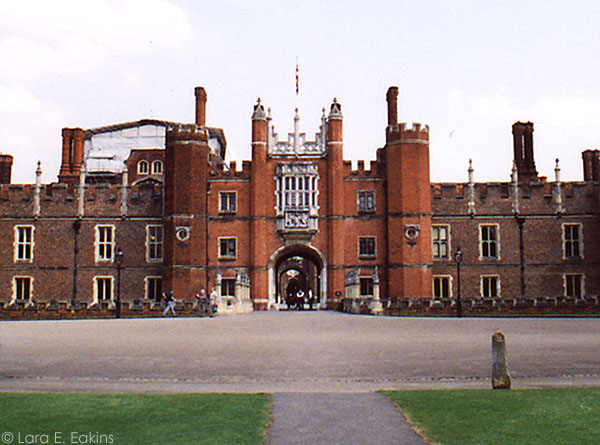

1. Hampton Court Palace is one of the earliest Renaissance structures in England. How does Hampton Court reflect the image and power of a Renaissance prince? Describe the architecture, furniture, and artifacts associated with the Tudor portions of the palace (this includes rooms associated with Wolsey as well as Henry VIII and his family). How is Hampton Court similar to and different from medieval royal residences (e.g., those in Winchester Castle, the Tower of London, Edinburgh Castle, etc.)?
 |
 |
2. How does Hampton Court Palace and its grounds
change under the Stuart and Georgian monarchs? Describe the additions
to the palace and gardens planned by Sir Christopher Wren. What images
of monarchy are evoked by his classical facades? What changes are
made in this period to make the private apartments more comfortable and
less public?
Suggested Readings:
Aston, Margaret. The King's Bedpost: Art, Reformation and Iconography in a Tudor Group Portrait. Cambridge and New York: Cambridge University Press, 1993.
Howard, Philip. The Royal Palaces. Boston: Gambit, 1970.
Jerrold, Walter. Hampton Court. London: Blackie and Son, Ltd., 1912.
Shuger, Debora K. Habits of Thought in the English Renaissance: Religion, Politics, and the Dominant Culture. Berkeley: University of California Press, 1990.
Strong, Roy C. Holbein and Henry VIII. New Haven: Yale University Press, c1967.
Williamson, David. The Kings and Queens of England.
London: National Portrait Gallery,
1998.
RETURN TO HIS 499 SYLLABUS
RETURN TO HIS 599 SYLLABUS
RETURN TO MCCANDLESS HOMEPAGE